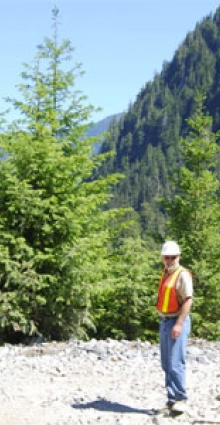 Thanks to the many readers who responded to the professional reliance question in our winter 2010/2011 newsletter. Your effort is greatly appreciated and your insights will help shape how the Board approaches this important topic.
Thanks to the many readers who responded to the professional reliance question in our winter 2010/2011 newsletter. Your effort is greatly appreciated and your insights will help shape how the Board approaches this important topic.
Over the past several months, the Board’s work has seen some changes. In particular, we are interacting with a much broader group of stakeholders than in the past. In addition to an increase in First Nations operated forest companies and community forests, we have seen greater engagement with the oil and gas and independent power sectors. We consider this to be a positive trend, as it allows us to better understand and report on the broad range of activities and interests that impact forest resources. We have also done follow-up in several areas to see what has happened as a result of past investigations and recommendations.
In this issue of Eye on BC’s Forests we report on recent Board activities, action arising from some past reports, and provide a glimpse of some current projects. More information is available on our web site, and in our most recent annual report. Please let us know if there are topics you’d like us to cover in future newsletters.
On June 22, the Board members held an all-day meeting in Whistler, BC. In addition to regular business, the Board met with representatives from the Cheakamus Community Forest and heard about current plans and challenges the community forest is working with. Heather Beresford and John Hammonds gave an overview of the make-up of the community forest, operating challenges, and relationships that are being forged. The Community Forest is a partnership between the Resort Municipality of Whistler and the Squamish and Lil’wat First Nations. Chair Al Gorley summed up the presentation by noting that the community forest is a microcosm of forestry in BC, dealing with Aboriginal cultural management areas, fuel management concerns, commercial recreation operators, public and tourism interests, and more.
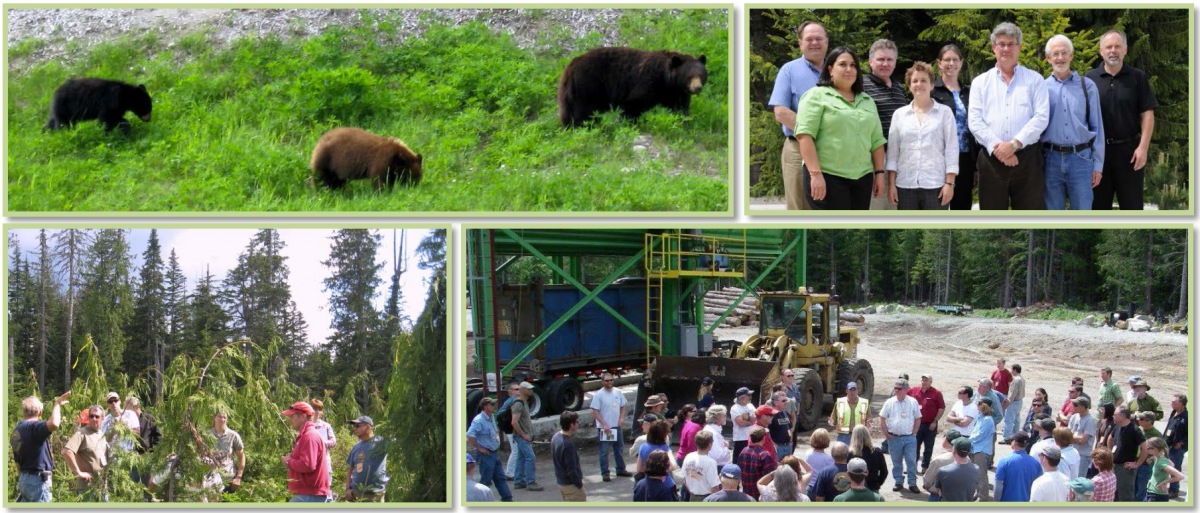
The Board also heard from members of the Coast Region FRPA Implementation Team, a group of government and industry representatives, about the work that has been done in response to the Board’s report on high retention harvesting on the coast. While the use of this harvest system (which involves removing select trees of value while retaining the majority of forest on site) has declined since the Board’s work was done, those sites where it has recently been used have much better economic opportunities remaining for the future, and less species conversion from high value cedar to lower value hemlock forest.
Finally, the Chief Forester, Jim Snetsinger, was able to join the Board for a couple of hours to provide an update on the organization and mandate of the Ministry of Forests, Lands and Natural Resource Operations, current stewardship thinking he is engaged in, and to share priorities, concerns and issues. Following the meeting, the Chief Forester joined the Board for an evening hike to see some ancient cedar trees in the Soo River Valley, north of Whistler.
On June 23 and 24, the Board members joined the Coast Silviculture Committee’s summer field tour and took in some harvested sites between Furry Creek and Devine, BC, where silviculture and fuel management challenges were viewed and discussed by foresters from up and down the BC Coast. It was a rare opportunity for the Board members to get out on the ground with industry and government forest professionals and managers to view and discuss the issues they deal with on a daily basis. The Board values the opportunity to engage in real discussion of forestry on-the-ground and hear first hand from professionals working in BC’s forests.
The BC Government has responded positively to a number of Board recommendations made in the past few years. The Board is pleased with these responses, and will continue to monitor these issues to see if improvements result on the ground.
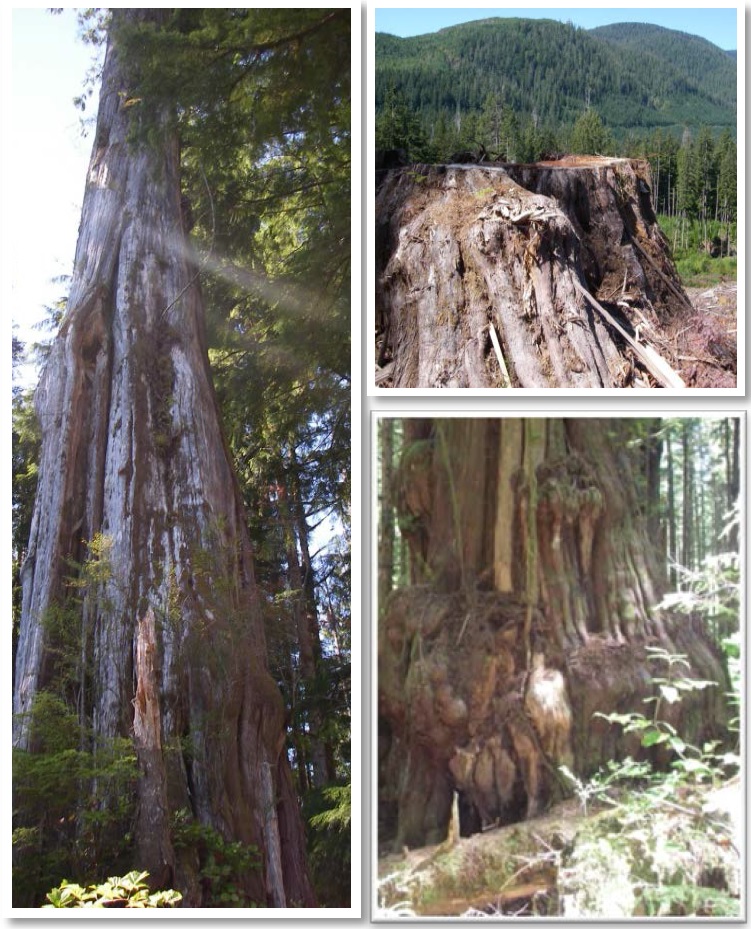 Protection of Ancient Trees for Logging
Protection of Ancient Trees for LoggingIn June 2010, the Board received a complaint about the logging of some very large and old trees near Port Renfrew. The complainant believed these trees should not be cut down because, in his view, they will never be replaced. The complainant wanted logging of “ancient” trees to stop; an old‐growth strategy to be developed, and the area near Port Renfrew, (referred to by environmental groups as Avatar Grove) to be saved from logging.
The investigation found that the forest company met all provincial requirements when it harvested the trees in question, and that part of the area is already included in an old growth management area. However the Board commented that government, forest professionals, and forest licensees should seek creative means to conserve trees of exceptional size or form, age or historical significance and, where appropriate, the forest stands that contain them.
As result of the Board’s report, along with the concerns voiced by the public, the Forest Minister at the time, the Honourable Pat Bell, directed the ministry to look at ways to protect individual trees or groups of trees of significance.
For more details on the Board’s investigation, please read the complaint investigation report - Logging Old-Growth Forest near Port Renfrew.
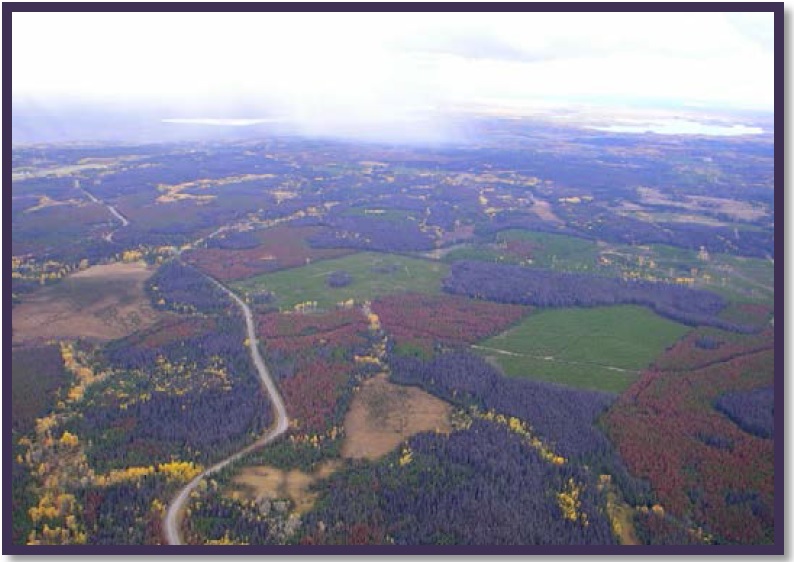 Also in early 2011, the Ministry of Forests, Lands and Natural Resource Operations responded to a recommendation made as a result of the investigation of biodiversity conservation in salvage logging areas in the central interior of BC. That investigation found that objectives for retaining trees were being met in individual cutblocks, but when looked at from the landscape level, they were not. Large and very large disturbed areas are being created across the region, reducing the amount of older forest providing biodiversity. Following the investigation, government and the Council of Forest Industries (COFI) created a joint action committee to study the problem further and recommend actions to improve landscape level retention for biodiversity. That group confirmed the Board’s findings and came up with a number of recommendations for government, which have now been adopted.
Also in early 2011, the Ministry of Forests, Lands and Natural Resource Operations responded to a recommendation made as a result of the investigation of biodiversity conservation in salvage logging areas in the central interior of BC. That investigation found that objectives for retaining trees were being met in individual cutblocks, but when looked at from the landscape level, they were not. Large and very large disturbed areas are being created across the region, reducing the amount of older forest providing biodiversity. Following the investigation, government and the Council of Forest Industries (COFI) created a joint action committee to study the problem further and recommend actions to improve landscape level retention for biodiversity. That group confirmed the Board’s findings and came up with a number of recommendations for government, which have now been adopted.
For more details, refer to the Board’s report and the follow-up correspondence at: https://www.bcfpb.ca/reports-publications/reports/biodiversity-conservation-during-salvage-logging-central-interior-bc/
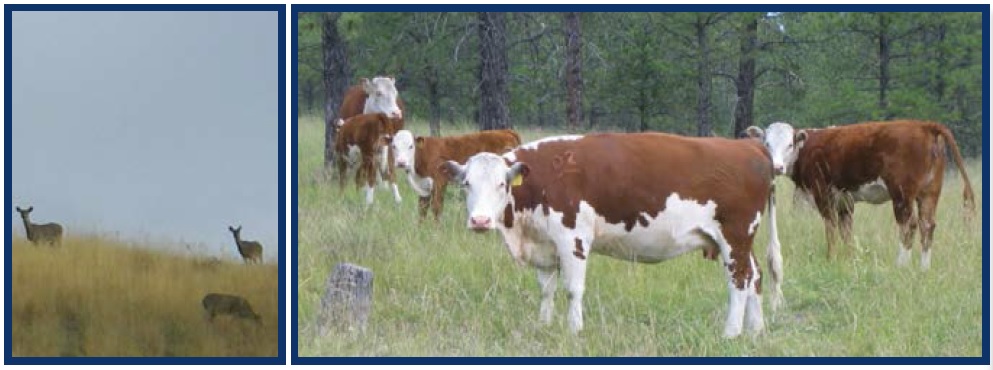 In 2008, the Board completed an investigation of a complaint about elk and cattle causing damage to forage resources in the East Kootenays. The complainant was concerned that the lack of government action to address forest in-growth and increasing elk and deer populations was resulting in lost ranching opportunities and over-grazing of wildlife winter ranges. The Board recommended that the Ministry of Forests and Range and the Ministry of Environment direct reductions of forage use in the East Kootenays to levels sufficient to achieve a positive and continuing trend in grassland ecosystem condition. After several years of delay, the new Ministry of Forests, Lands and Natural Resource Operations responded to the Board in March 2011, describing a number of actions the Ministry is now taking to address livestock grazing, elk management and ecosystem restoration. The Ministry also committed to undertake a review in the near future to see if additional actions are needed.
In 2008, the Board completed an investigation of a complaint about elk and cattle causing damage to forage resources in the East Kootenays. The complainant was concerned that the lack of government action to address forest in-growth and increasing elk and deer populations was resulting in lost ranching opportunities and over-grazing of wildlife winter ranges. The Board recommended that the Ministry of Forests and Range and the Ministry of Environment direct reductions of forage use in the East Kootenays to levels sufficient to achieve a positive and continuing trend in grassland ecosystem condition. After several years of delay, the new Ministry of Forests, Lands and Natural Resource Operations responded to the Board in March 2011, describing a number of actions the Ministry is now taking to address livestock grazing, elk management and ecosystem restoration. The Ministry also committed to undertake a review in the near future to see if additional actions are needed.
For more details, refer to the Board’s report and the follow-up correspondence at: https://www.bcfpb.ca/reports-publications/reports/wildlife-and-cattle-grazing-east-kootenay/
In a Board investigation of a complaint that the BC government had not been diligent in acting on a 2008 consultant report identifying concerns for glyphosate herbicides toxicity for amphibians, the Board commented that it is important for the Ministry of Environment (MOE) to establish a direct communication link with the federal Pest Management Regulatory Agency (PMRA)—creating an opportunity for MOE to bring a greater profile to this issue, perhaps leading to a more timely and issue-targeted review of the product.
In response, an MOE representative met with representatives of the PMRA in Ottawa to reinforce BC’s interest in the review of glyphosate products formulated with polyethoxlated tallow amine, specifically as it relates to impacts to amphibians. MOE recently advised the Board that the work plan for the federal re-evaluation of glyphosate is targeted for completion in 2014.
In addition, MOE released Technical Guidance related to glyphosate use near amphibian habitat to all confirmation holders and licensees that work in the forest sector. The document provides a description of the issue, who it concerns, recommended actions and links to additional information.
For more detail, please refer to the Board’s Closing Letter: Glyphosate Herbicide Impacts and MOE’s Letter of Response .
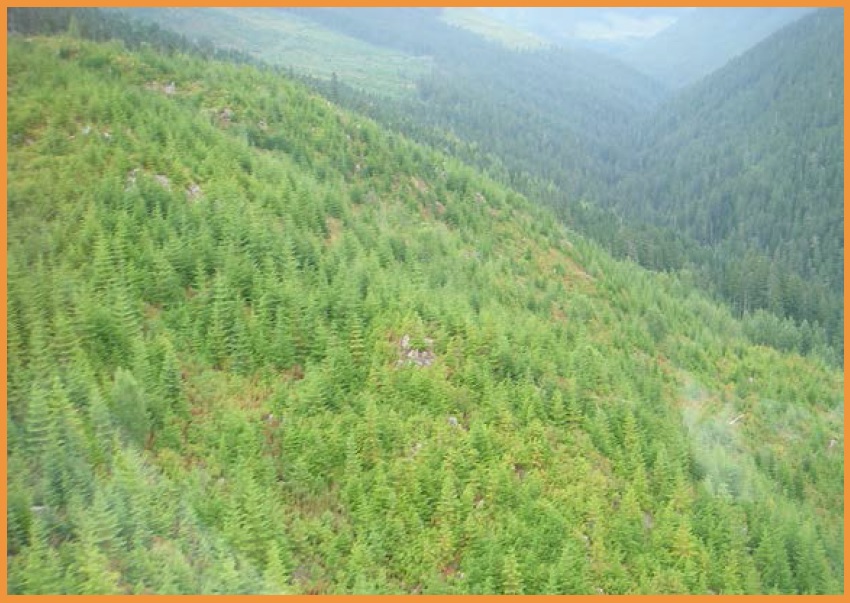 For well over a year now, public debate has focused on the topic of NSR – or ”Not Satisfactorily Restocked” areas of forest land. A series of opinion pieces and letters to the editor have appeared in provincial media. At issue is how much of the provincial forest is not growing an adequate number and size of trees to ensure a sustainable forest industry in the future.
For well over a year now, public debate has focused on the topic of NSR – or ”Not Satisfactorily Restocked” areas of forest land. A series of opinion pieces and letters to the editor have appeared in provincial media. At issue is how much of the provincial forest is not growing an adequate number and size of trees to ensure a sustainable forest industry in the future.
While the forest industry is legally required to restock sites they harvest, there are areas where stocking has been affected by disease, insect infestation and forest fires, and government is responsible for replanting. In many cases, we don’t know the extent of the issue because there has not been any recent surveying or inventory work done. Estimates of the size of the NSR area range from 200,000 hectares to many millions of hectares.
One of the Board’s strategic interests is whether a resilient forest is being established and maintained, consistent with public expectations and assumptions. Therefore, the Board has decided it would be in the public interest for the Board, as an independent voice, to provide comment on the current status and implications of NSR, in the form of a special report.
That special report will be written for the general public and policy makers and will include:
i. What is the significance of the unknowns to decisions that are made involving the topic?
ii. What is government doing to address the information gaps about the nature of the forest in areas affected by beetles and fires?
iii. What is government doing to address the loss of mature and immature forests in the timber harvesting landbase and the loss of non-timber values such as visual quality and biodiversity values in dead old growth management areas (DOGMAs)?
iv. To the extent possible, what are the socio-economic and ecological consequences of government’s strategy and actions for addressing the NSR situation?
The report will be based on a collection and analysis of existing data relevant to the topic and formal and informal interviews with policy makers, forest managers and those who attempt to influence public opinion on the topic.
Although the summer weather has finally arrived, the long cool spring means there is still considerable snowpack in the mountains, which delayed the start of the Board’s audit season. The Board has announced four audits so far, the first of which started in June and the rest starting in mid to late July. In addition to these audits, we will audit two BCTS operations and several more licensees.
Tk’emlupsemc Forest Development Corporation – NRFL A80706; the Ashcroft Indian Band – NRFL A81385; and the Neskonlith Indian Band – NRFL A83410
These three non-replaceable forest licences are located within the Kamloops Timber Supply Area (TSA), in the Kamloops Forest District. Auditors were out in the field from June 20 to 24, 2011. For more information, please read the news release.
Ma-Mook Natural Resources Ltd. – TFL 54
Previously audited by the Board in 2000, when it was held by Interfor, Tree Farm Licence 54 (TFL 54) is located in the South Island Forest District, near the communities of Tofino and Ucluelet. Most of the forest activities and obligations to be audited are within the Clayoquot Sound area.

Auditors were out in the field during the week of July 19, 2011. For more information, please read the news release.
Sechelt Community Projects Inc. – CFA – K3F; Tla’Amin Timber Products Ltd. – PCFA – K3P; Klahoose Forestry Limited Partnership – CFA – K4C; and Powell River Community Forest Ltd. – PCFA – K3G
The Board will be auditing all four Community Forests in the Sunshine Coast Forest District.
Field work will be spread over a two week period, starting July 18, 2011. For more information, please read the news release.
J.H. Huscroft Limited – Forest Licence A20213
This will be the first time the Board has audited this company, J. H. Huscroft Limited – Forest Licence A20213, located near the town of Creston.
Auditors plan to be out in the field for about 1 week, starting July 25, 2011. For more information, please read the news release.
 In 2005, the Forest Practices Board recommended that government conduct fire management planning before the fire season begins and secure the agreement of the land manager on the general response to a fire. Government responded that it would develop a wildfire management planning policy and it did—the policy was approved in 2008. In 2011 the Board decided to look at the implementation of these plans. Fire management plans show the values on the landscape including infrastructure, cultural heritage sites, and community watersheds. Some plans also indicate areas where fire may be beneficial and where it is not wanted.
In 2005, the Forest Practices Board recommended that government conduct fire management planning before the fire season begins and secure the agreement of the land manager on the general response to a fire. Government responded that it would develop a wildfire management planning policy and it did—the policy was approved in 2008. In 2011 the Board decided to look at the implementation of these plans. Fire management plans show the values on the landscape including infrastructure, cultural heritage sites, and community watersheds. Some plans also indicate areas where fire may be beneficial and where it is not wanted.
The project team reviewed existing fire management plans from across the province, reviewed the Fire Analysis for selected fires and interviewed relevant district and fire centre staff to determine how values at risk and restrictions on practice were identified; whether resource information was adequately incorporated into control plans; whether the plans were followed; and whether the plans were successful.
Next the team examined 12 fires across the province to see if activities on the ground reflected the fire management plan and the fire analysis. Analysis of the results will take place over the summer and fall and a report should be ready by the end of the year.
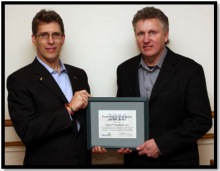 Our very own vice-chair, John Dunford, RPF, was recognized by the Association of BC Forest Professionals (ABCFP) as the Professional Forester of the Year!
Our very own vice-chair, John Dunford, RPF, was recognized by the Association of BC Forest Professionals (ABCFP) as the Professional Forester of the Year!
The award recognizes a Registered Professional Forester (RPF) for outstanding, recent service to the forestry profession and for furthering the ABCFP’s principles.
John had contributed more than 30 years to the forestry profession as a professional forester in the northern and southern interior of BC.
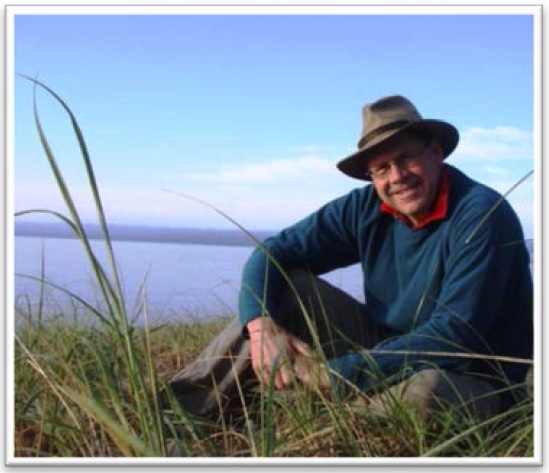 Everyone at the Forest Practices Board bids Al Peatt a fond farewell and best wishes in his retirement.
Everyone at the Forest Practices Board bids Al Peatt a fond farewell and best wishes in his retirement.
Al Peatt, Manager of Audits and Investigations, has worked for the Forest Practices Board since 2000. In May of this year, Al decided to slow things down and he officially retired from government and took up consulting. We’re not sure that qualifies as slowing down, but we wish him well in his endeavors.
During his time with the Board, Al made valuable contributions through a number of significant projects, including:
Al’s expertise, his passion for stewardship of forests and wildlife, and his commitment to the mission and mandate of the Board will be missed.
